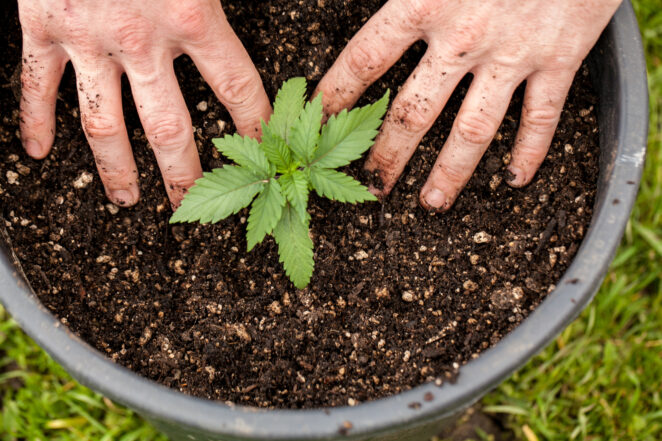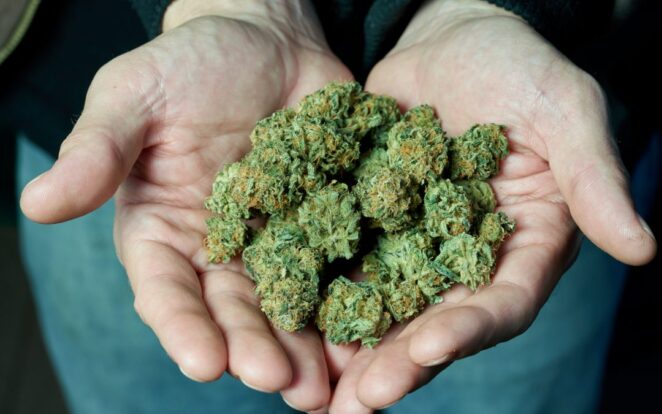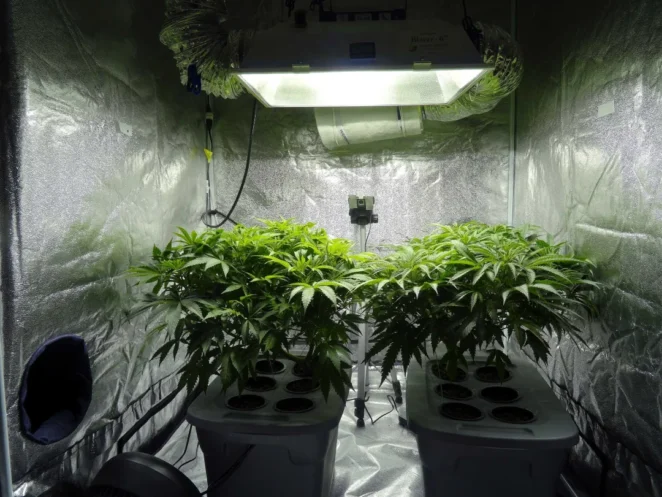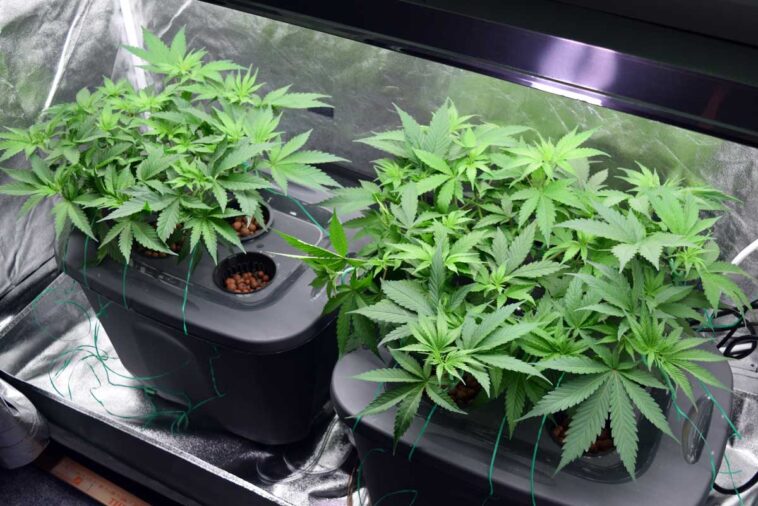Cannabis can be grown year-round indoors, giving you complete control over the plant and the nutrients it receives. Even if you don’t have a backyard or a lot of extra room, it most definitely wouldn’t matter. These are the procedures to adhere to for effective growth:
Germinating your seed
Before planting, check to determine if the seed is viable to ensure that it will germinate. To begin, place your seed in a clear Ziploc bag with a damp paper towel, seal the bag, and place it somewhere moderately warm.
If the seed is viable to grow, you will observe a tiny white tail coming out after one to three days. Within five days, if you haven’t noticed a tail, you must find another seed.
Germinate multiple seeds at once. Until your plant starts to flower, you cannot tell if it is male or female. Your dream of having a field full of female plants can be achieved by planting feminized weed seeds. You want flowers, not pollen, which male plants exclusively generate for sexual reproduction. Female species produce microscopic hairs at the base of the stems, or “nodes,” as they are known.
Plant your seed

Use a preferred container with drainage holes and a common potting soil blend. With your exposed tail pointing down, plant your seed in the dirt about an inch deep. After that, lightly sprinkle the top of the container with clean water, and place it somewhere it may receive direct or indirect light, such as from the sun or a grow lamp.
Your first set of weed leaves will start to emerge from the soil in two to three days. One of the trickiest tasks is completed!
Bring it into the light
When it comes to lighting, there are a virtually limitless number of alternatives, so picking the proper sort is crucial. For an indoor grower, it is frequently the topic that is discussed and over thought the most. Using affordable LED lights is an excellent alternative for the beginning grower given the variety of options for indoor illumination. LEDs are applicable to all phases of plant development. Compared to conventional indoor plant lightings, such as high-pressure sodium (HPS), metal halide (MH), or plain old fluorescents, they produce excellent light with a little upfront cost and frequently less heat (FL or CFL).
Vegetative growth
Before your new weed is ready to flower, you need to give it a little more time to grow and allow it to reach sexual maturity so that it can be large enough to produce the best lemon weed strains you want. Depending on the amount of area and lighting you’re using, this stage is highly individualized. However, it’s a good idea to have 75 watts of illumination for every square foot of growing space.
Letting your grow light on for at least 18 hours per day, but up to 24 hours per day if you’d like, will allow your cannabis to grow for at least three weeks, but you may let it grow for however long you’d like.
Transplant the seedling into a flowering container

This is where you will give your plant its last residence, where it will stay for the remainder of its little existence. Although you can make a lot of customizations at this stage, you should choose a container that can accommodate roughly one gallon of soil for every foot of expected plant growth. Before planting and before transplanting, a quarter cup of granular bloom fertilizer should be placed into the soil. Bloom fertilizers, sometimes known as NPK fertilizers because of their higher levels of phosphorus and potassium and lower proportion of nitrogen, are widely used (5-10-10).
For the remainder of the plant’s life, growing is made simple by using a slow-release granular fertilizer. The plant gets fed every time you water it because of its delayed release action, which guarantees that it has all the nutrients it needs for the balance of its life cycle and eliminates the uncertainty of whether you gave it too much or not.
Forcing it to bloom
As a photosensitive plant, marijuana requires equal amounts of undisturbed darkness and light in order to “push it to flower,” which is the plant’s natural signal to start reproducing. The 12/12 cycle, which consists of 12 hours of light and 12 hours of darkness, is useful in this situation. For the remainder of its life, your plant has to be placed in a spot where it may receive regular dark hours.
Either a small closet or, if you have the funds, a grow tent, is the customary site. A simple 24-hour appliance timer will do, and you can program it to run for 12 hours before shutting off.
Let it grow
Let nature take the course for the next 8-9 weeks. Only water your weed when the top 3 or 4 inches of soil are completely dry and be sure to move your grow light up as it develops. Flowers start to appear in week three of this stage and most finish with eight or nine weeks of growth in the 12/12 light cycle. You want to maintain your light 12 to 24 inches from the tallest point of your plant to ensure that the tops aren’t becoming too heated, a condition known as “light burn.” Once the bigger leaves have started to yellow and 75% of the pistols on the flowers have gone red or brown, your plant is ready.
Harvest time

After waiting and watering for weeks, the day has finally arrived. Harvest time is here! After the eighth or ninth week, your cannabis is ready to be cut.
You just need to trim your plant and hang it upside down in a chilly, dark location. You can use the same area where you grew it by turning off the light. After letting the plant dry for seven to ten days, you should trim it. This is accomplished by clipping off all the remaining leaves, pruning around your bud sites, and removing any tiny leaves that don’t appear “frosty”. At this point, you’re finished!
Conclusion
Herbies affirms that temperature, humidity, and odor can all be kept stable with proper air movement. Every few minutes, air should ideally flow through a garden, therefore make sure it has a vent to the outside. Oscillating fans, intake and exhaust fans, and other air movement devices can quickly move air through your garden while expelling odors. Have fun growing your weed indoors.




